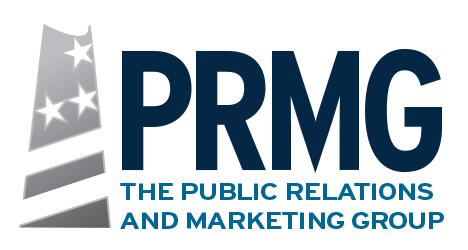by Steve Gerbino, Web Developer, PRMG
How the System Works
Google Analytics is a powerful Knowledge Management System and Geographic Information System. It gives everyone with access to the Internet the capability of understanding how the world views, manipulates, and navigates their website using the latest data mining technologies. Its ideal availability makes it one of the top analytical information systems used by small businesses.
Getting started is extremely simple, and tracking starts immediately. A Google account and access to one’s Web server is needed. The user then navigates to the https://www.google.com/accounts/Login page, enters their account details and follows the steps necessary to create an analytics account. Google will then provide the user with a JavaScript code to apply to each page they would like to track. They may then view the status to make sure everything has been installed correctly.
Once it has been verified that the JavaScript code has been implemented correctly, Google Analytics will begin collecting data on the visitors to the user’s site. Reports are made on a 24-hour basis, so they can be viewed the next day. Once the 24-hour period has passed, the user can now click “View Report” to enter their dashboard, summarizing all of the data collected.
From here, the user can get a complete overview of the information collected on their site — how many visits, how many are unique, how long did the visitors stay on each page, where are they located geographically, what browser and operating system did they use, what version of Flash do they run, do they have JavaScript capabilities, what percentage each page was landed on, and where the traffic originated, among other useful data. You have the option to customize your dashboard, to show you the ratios that you want to see. You can customize your own ratios, graph types, and location of the information on your dashboard.
A menu is located to the left of the user’s dashboard. This is where they can get more specific in each data collection category.
Each menu item provides a more detailed report on each category, including Intelligence, Visitors, Traffic Sources, Content, Goals, and Custom Reports.
The first menu item, Intelligence, is a new feature for Google Analytics. It is an alert system to identify irregular patterns recognizable by Google Analytics. Users can set their own custom alerts and allow Google Analytics to alert them when their system sees an issue. This can be handy when users analyze many websites that they don’t visit daily. They can see a drop in visitors for a day and find out that there is some problem with their site, such as coding, DNS, worms, or other forms of computer crime.
The next menu item, Visitors, is a highly powerful view of individual visitors to the site. Here, users can view how many visits, how many absolute unique visitors, how many page views, average page view per visitor, the time spent on their site, their site’s bounce rate, and percentage of new visits. It also shows the users the connection speed for their visitors. You may ask, what is a bounce rate? A bounce rate is a ratio of people who land on someone’s site and immediately leave. The goal of the user is to lower their bounce rate, which is increasing the time on their site. Up at the top, there will be a linear graph of visitors over time. One can see if the changes they made had a negative or positive effect on the amount of visitors they have had with just a glance.
Visitor also contains several sub-menu items including:
- Benchmarking – compares the user’s site to sites of similar size
- Map Overlay – shows the user geographical locations of visitors
- New vs. Returning – new visitors vs. visitors that return to the user’s site
- Languages – languages spoken
- Visitor Trending
- Visitor Loyalty
- Browser Capabilities – Flash version, JavaScript support
- Network Properties
- User defined
Traffic Sources
Traffic Sources is very useful in determining how someone’s site is doing. This will show the user where their visitors are coming from. Direct Traffic means that the visitors actually type in the user’s address in the browser. This usually indicates a returning and loyal visitor. Referral sites are people who’ve clicked a link for another website and landed on their page. Having many referral sites increases the user’s traffic and ranking dramatically. Here, they can see exactly what websites are bringing them the most traffic. Thirdly, Search Engines will show the users what traffic that search engines are bringing them. Not only do they show users what visitors Google has referred to their site, but they show them what they actually searched for in Google to get to their site. Now the user know what keywords are hot and what’s going to get them more traffic. This page is extremely handy.
Traffic Sources also contains the following sub-menu items:
- Overview
- Direct Traffic
- Referring Sites
- Search Engines
- All Traffic Sources
- AdWords
- AdWord Campaigns
- Keyword Positions
- TV Campaigns
- Keywords
- Campaigns
- Ad Versions
Content
Content can be viewed over time, of course, at the top. Users can get a more detailed understanding on the most viewed content on their site, and a variety of other really useful information regarding what content is visible on their site.
Content sub-menu items include:
- Overview
- Top Content
- Content by Title
- Content Drilldown
- Top Landing Pages
- Top Exit Pages
- Site Overlay
Site Overlay is an interesting item. It will bring up their website with a Google Analytics toolbar at the top and then put an overlay over their site so that it is shown in sectors. Each little slice of the user’s website will have a click-through percentage. This gives them a very powerful visualization of where people are actually clicking on their site. Users can find every link with a white tab showing them the percentage that it was clicked. Where are the hot spots? Where do people never click? This all can be shown with Site Overlay!
Goals
Goals are set by the user. They are pages the user wants their visitors to end up. If the user’s company is selling goods, they may set your goals to the Order Completion page. If the company is looking to get more members on their site, you may set a goal to the Registration Activation page. Another capability of Goals is funneling. A funnel is a path the user specifies from start to finish to achieve a goal. They may specify several funnels to a goal, and once a funnel is specified, they can then analyze where users stop the path or how long each step takes. On their overview, users will have a goal conversion rate — that is, the percentage of the visitors to the user’s site who have completed the goal you have set. This is a very powerful tool and can be used to improve the user’s intentions for their website.
The following are sub-menu items of Goals:
- Overview
- Total Conversions
- Goal Verification
- Reverse Goal Path
- Goal Value
- Goal Abandoned Funnels
- Funnel Visualization
Positive and Negative Points
Cons
There aren’t many cons to begin with. Google Analytics is JavaScript code, and if users are looking for information about how Bots are hitting and viewing their site, Google Analytics cannot do this for them. JavaScript is not enabled in a text-based session of a bot. Also, viewers that do not have JavaScript enabled will not be tracked. This number is extremely low and will probably affect less than 1% of the user site’s population.
- Does not track bots
- Does not track users without JavaScript
Pros
The Pros outweigh the Cons significantly. This software is absolutely free. It costs the Web developer nothing to have this information system working for them within minutes. Why would Google offer such a great service for free? Well, the answer to that is easy. Google realizes the value of data, and with Google Analytics, users have the option to submit anonymous data about their traffic and help Google keep their practices top-notch. Google uses an opt-in approach to this, meaning the user, by default, is going to submit anonymous data to Google. They can easily uncheck the box to stop this.
- Cost-free
- Very powerful
- Easy to use
- Easy to understand
- Totally customizable
- Integration with other systems
- Integration with Google AdSense & AdWords
Recommendations for Implementation
There is nothing else needed to prepare the integration of Google Analytics to a site. A basic knowledge of Web development and access to one’s Web server through their Web hosting service are all that is needed. The user simply places the JavaScript onto their site’s pages and begin analyzing data. Google could not have made it easier. Extensive training is unnecessary. Once the user logs in to their dashboard, everything is right there at their fingertips. For those who have an advanced system and wish to stream data into it, Google provides information on how to do this, as well as a number of companies who have already designed software to take this information and display it in many different ways.
Customer Service
Google provides a huge knowledgebase of FAQs, as well as a help forum. There are many best practice methods available and ways to improve one’s visibility all in Google’s documentation. One can reach customer service by logging in to their Google Analytics account and submitting a post on their forum, or searching their knowledgebase. Seeing as though their software is top-quality, anyone knowledgeable in Information Technology should see installation of this software as trivial. Any detailed questions have been addressed in their FAQ section, and the forum is reserved for more specific issues.
References
http://web-analytics-review.toptenreviews.com/free-web-analytics.html describes Google Analytics as both “comprehensive” and “easy-to-use”.
http://www.blippr.com/apps/337954-Google-Analytics users describe Google Analytics as “amazing,” “All of the tools you need to report from tracking page views to ecommerce,” “The most powerful analytics!!!” and “Google Analytics continues to make progressively better enhancements while the former leader WebTrends remains relatively unchanged.”
http://www.mediacollege.com/internet/statistics/software/google-analytics/ claims that Google Analytics is “The best stats application I have used.”









